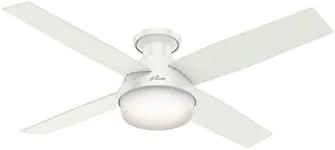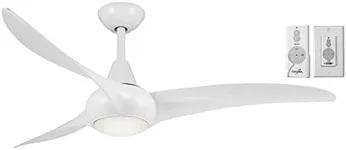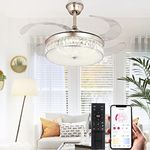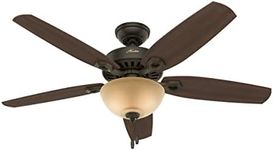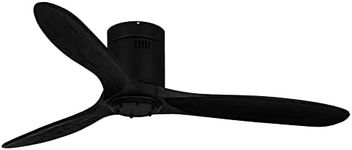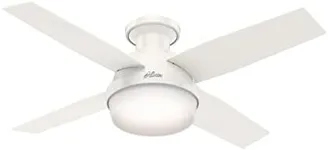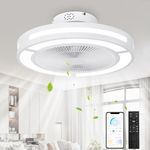Buying Guide for the Best Quietest Ceiling Fans For Bedrooms
Choosing the right ceiling fan for your bedroom is all about creating a comfortable, peaceful environment where you can relax and sleep well. The quietness of the fan is especially important in bedrooms, as any noise can disturb your rest. When shopping for a ceiling fan, it's important to look beyond just the style and size—pay close attention to features that affect noise, airflow, and ease of use. Understanding the key specifications will help you find a fan that fits your room and your personal comfort needs.Motor TypeThe motor is the heart of a ceiling fan and plays a big role in how quiet it operates. There are two main types: AC (alternating current) and DC (direct current) motors. DC motors are generally quieter and more energy-efficient, making them a great choice for bedrooms where silence is golden. AC motors are more common and can still be quiet, but they may produce more hum or vibration. If you are sensitive to noise, look for fans with DC motors or those specifically labeled as 'silent' or 'whisper-quiet.'
Blade Design and MaterialThe shape, number, and material of the blades affect both the airflow and the noise level. Blades made from wood or high-quality plastic tend to absorb sound better than metal blades, which can create more noise. Fewer blades can sometimes mean less noise, but the design and balance are just as important. For bedrooms, look for fans with well-balanced, aerodynamically designed blades made from noise-dampening materials. This will help ensure smooth, quiet operation.
Fan Size (Blade Span)The size of the fan, measured by the blade span, determines how much air it can move and how well it fits your room. For bedrooms, you want a fan that is large enough to circulate air effectively but not so big that it overwhelms the space or creates unnecessary noise. Small bedrooms (up to 75 sq. ft.) usually need fans with a 29-36 inch span, medium rooms (76-144 sq. ft.) do well with 36-42 inches, and larger bedrooms (up to 225 sq. ft.) may need 44-54 inches. Choosing the right size helps the fan run efficiently and quietly.
Speed SettingsCeiling fans come with different numbers of speed settings, usually ranging from three to six. More speed options allow you to fine-tune the airflow and noise level. Lower speeds are generally quieter and are ideal for nighttime use in bedrooms. If you want flexibility, look for a fan with multiple speed settings so you can adjust it to your comfort and noise preferences.
Mounting TypeHow the fan is mounted can affect both its performance and noise. Flush-mount (hugger) fans are installed close to the ceiling and are good for rooms with low ceilings, but they may sometimes transmit more vibration to the ceiling. Downrod-mounted fans hang lower and can be quieter, especially in rooms with higher ceilings. Choose the mounting type that fits your ceiling height and consider how it might impact noise and airflow.
Noise RatingsSome manufacturers provide noise ratings, often measured in decibels (dB). Lower numbers mean quieter operation. While not all fans have this rating, if you see it, use it as a guide—fans rated below 50 dB are generally considered quiet enough for bedrooms. If you are very sensitive to noise, look for fans with specific 'quiet' certifications or customer reviews that mention silent operation.
Remote Control and Smart FeaturesHaving a remote control or smart features can make it easier to adjust the fan without getting out of bed, which is especially convenient at night. While these features don't directly affect noise, they do add to your comfort and can help you quickly lower the speed if the fan gets too loud. If convenience is important to you, look for fans with easy-to-use remotes or smart home compatibility.
